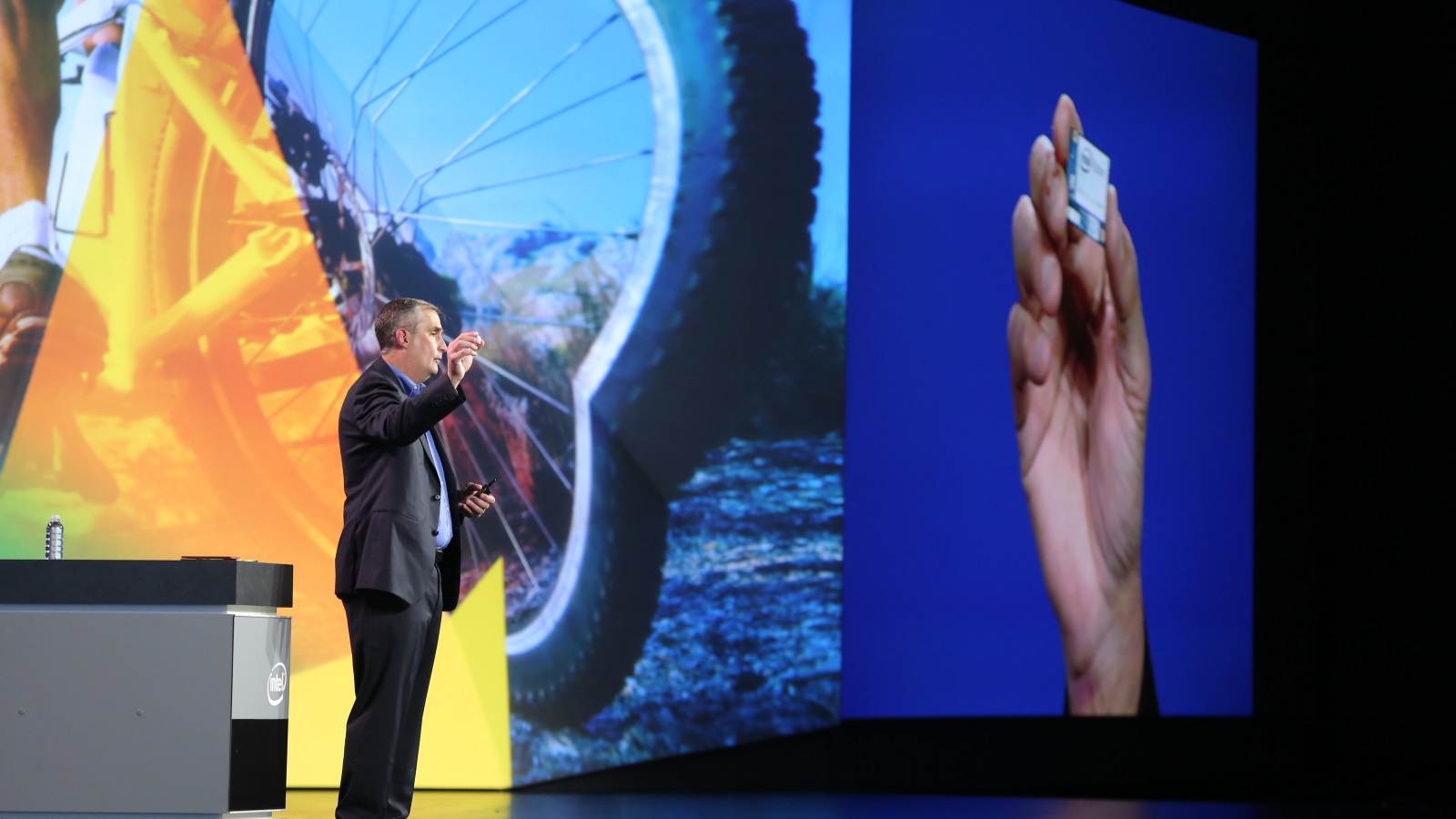 NEWS
NEWS
 NEWS
NEWS
 NEWS
NEWS
Intel Corp. and Qualcomm Technologies Inc., the two chip companies known for their respective dominance of personal computers and mobile devices, both reported higher-than-expected earnings. But the results prompted strikingly different reactions from investors.
Intel today reported a second-quarter profit before certain expenses of 59 cents a share, higher than the 53 cents analysts expected. But buffeted by the continued decline in personal computer sales, sales at the Santa Clara, CA-based company rose only 3 percent from a year ago, to $13.5 billion, just shy of analysts’ expectations. Investors in trading after the market close appeared unimpressed, as shares fell about 3 percent following a 1.5 percent rise, to $35.69, in today’s market session.
“We’re gaining momentum heading into the second half,” Intel Chief Executive Officer Brian Krzanich (pictured above) said in a statement. “While we remain cautious on the PC market, we’re forecasting growth in 2016 built on strength in data center, the Internet of Things and programmable solutions.”
Despite Krzanich’s comments, however, growth in those newer areas didn’t match the first quarter. Data center revenues rose 5 percent from a year ago, compared with a 9 percent rise in the first quarter. And the Internet of Things business was up only 2 percent from a year ago after a 22 percent first-quarter jump. In the analyst conference call, Krzanich blamed that slowdown on “inventory burn” after the strong first quarter.
Overall, Intel’s net profit fell 49 percent, to $1.3 billion, due to a $1.4 billion restructuring charge from a layoff announced in April. The company is forecasting third-quarter revenues at about $14.9 billion, with double-digit growth from the non-PC businesses. For the full year, it’s anticipating revenues to grow in the mid-single-digits from 2015.
“Investors are spooked because Intel committed to double-digit growth in data center revenues, but for the first half now, it only had single-digit growth,” said Patrick Moorhead, president and principal analyst with market researcher Moor Insights & Strategy. So now Intel has a lot of ground to make up.
But Moorhead said the shortfall this time probably is temporary–possibly a single public cloud provider waiting to buy Intel’s new data center chips until the next quarter. Industrywide, enterprise computing revenues have stabilized, he said, judging from positive earnings results in the last month or so from Cisco Systems, Hewlett-Packard Enterprise, EMC and others.
By contrast, Qualcomm was seeing shares up almost 7 percent in after-hours trading, to about $59.65. It earned $1.16 a share on a 3.6 percent rise in revenues, to $6 billion, in its fiscal third quarter. Analysts had expected a 97-cent profit on $5.58 billion in revenues.
The San Diego, CA-based company, which supplies processors and modem chips for phones, also said it expects to earn between $1.05 and $1.15 a share, a bit ahead of consensus estimates of $1.08. Qualcomm also said it expects fourth-quarter revenues of $5.4 billion to $6 billion, compared with analysts’ forecasts of $5.7 billion. It also said it expects a compound annual growth rate of 18 percent its new markets, such as Internet of Things and automotive.
“They killed it on the quarter and they killed it on the outlook,” said Moorhead. That’s thanks to regaining Samsung as a smartphone customer as well as garnering more licensing revenues and other business in China.
Intel’s report was less dramatic than the first-quarter report, which was overshadowed by the announcement of 12,000 layoffs, 11 percent of its workforce, by the middle of next year. That move was the most potent sign yet that Intel is struggling to move beyond a dependence on chips for personal computers to providing processors for servers in data center and for the cloud as well as mobile devices and sensor networks for the developing Internet of Things market.
While chips for the new markets are growing more quickly, Intel faces a long transition from PCs, whose sales according to Gartner Inc. fell 5 percent in the second quarter — a slower decline than recent quarters — to the new markets, where there’s also rising competition.
In mobile devices, ARM Holdings, for which Softbank just bid $26 billion to acquire, and Qualcomm remain the powerhouses. And Softbank has plans to use ARM as a wedge to expand its Internet of Things operation.
Intel’s mobile fortunes may be on the rise, however. It recently won a contract to supply chips for Apple Inc.’s upcoming iPhone 7. That development has contributed to an 11 percent rise in Intel’s shares in the last three months.
As for its higher-end processors for data centers and the cloud, Intel aims to enable the creation of tens of thousands of private and hybrid clouds beyond what it calls the “Super 7” public cloud providers such as Amazon Web Services, Microsoft Azure and Google Cloud Platform. But these chips for data centers and cloud computing servers face newer entrants such as Nvidia’s graphic processing units, increasingly used for fast-growing machine learning applications.
THANK YOU